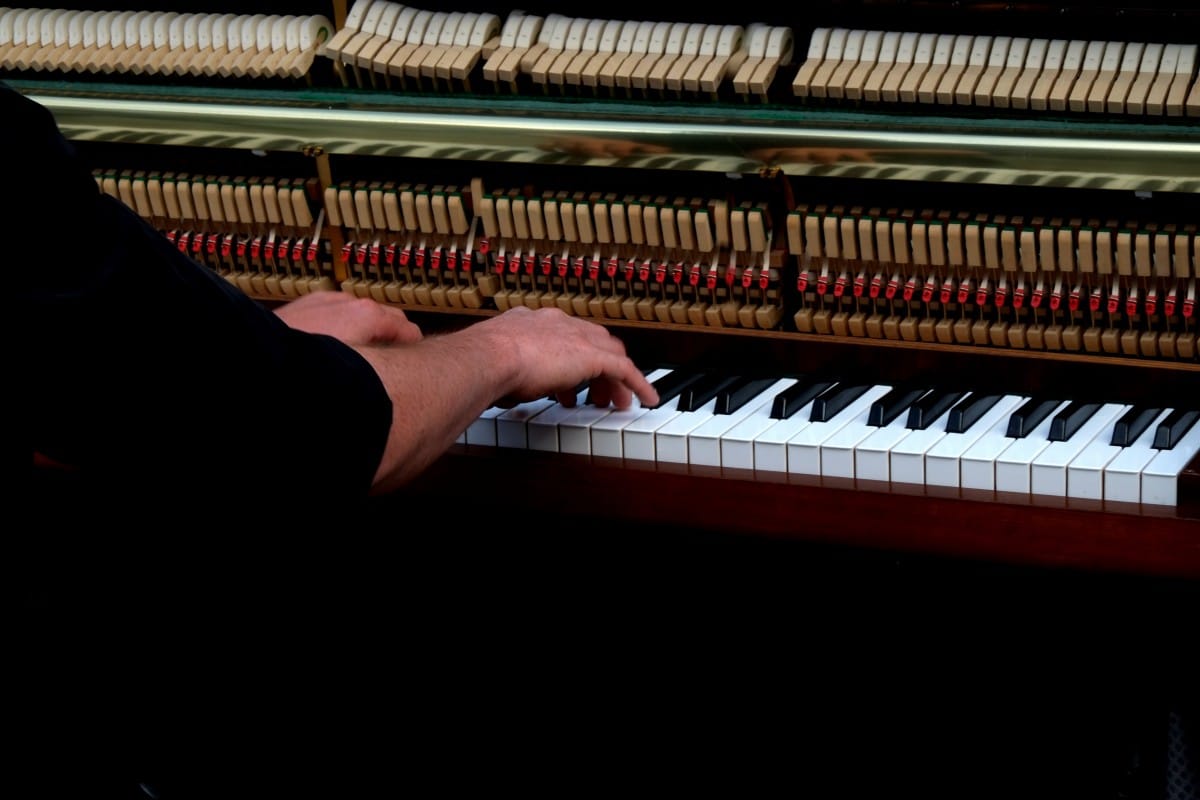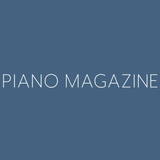Illuminations of the Past, Innovations of the Future: Piano Playing and Building in the Twenty-first Century

The advent and popularization of historical performance practice in recent years has led to some wonderful innovations in piano performance. In many circles, Mozart’s original and intimate ideas of phrasing are now readily reinstated and re-legitimized over more long-line Romantic approaches; familiarity with Bach’s ornamentation and practices of articulation are encouraged and explored through such seminal works as his son’s treatise; and great, largely unexplored repertoires are getting more attention from pianists. It is not unusual to encounter mainstream performers, including András Schiff and Krystian Zimerman, deeming to play period instruments or period-influenced instruments alongside modern ones. Chicago College of Performing Arts Professor David Schrader articulates this situation well:
It’s probably best to think that each historical [keyboard] instrument served the music of its own time best. After all, you wouldn’t necessarily restore an old oil painting with acrylic paint. Even if you choose not to play the historical instruments, if you study them and how they work, it will modify your approach to make for a clearer, nicer approach on the modern instrument.1
Without taking anything away from the qualities of period instruments, it must be said that our modern instrument is a wonder of design and ingenuity—it is, in the words of Stewart Gordon,
a precision instrument [. . .] there are approximately 100 working parts for each of the 88 keys. All of the parts are precisionmade, correct to within 1/1000th of an inch. There are about 230 steel wires, each exerting somewhere in the neighborhood of 170 pounds of tension.2
While a more-or-less standardized version of this impressive and imposing instrument can be found in every major concert hall and recital venue in the world, the journey of the modern pianoforte’s development is certainly not “linear,” and in its earliest days it was something of an oddity itself. While so-called Viennese and English builds began to take prominence in Europe around the turn of the eighteenth century, the instrument was in no way “standardized”—even its Italian name, fortepiano, was known to cause confusion. Beethoven himself purportedly attempted to create a German name for the piano: Ein Schwachstarktastenkasten— the idiosyncratic word combines “soft,” “loud,” “keys,” and “case.” Along the development of this oddity there have been many prototypical “innovations” that are now long forgotten.

During a recent trip to Belgium, I came across some of the more interesting of these discarded innovations at the Muziekinstrumentenmuseum in Brussels. One of the first encountered was a square piano with a “Turkish” pedal from 1818 Paris. The Turkish stop was just one of many standard special effects a performer might expect to find on a contemporary fortepiano, and there are extant works by composers such as Mozart which seek to utilize such effects (Photos 1 and 2).

Also around this time one may find an assortment of table pianos—these instruments seem to have been at one point as common as the spinet or the horizontal piano, and do actually make some sense in terms of space, but they are now totally extinct (Photo 3).

The nineteenth-century areas of the museum include a few highly interesting examples of long-gone innovations of piano making. One of these, the pedal piano, seemed convincing enough to Robert Schumann as a pianoforte innovation that he wrote entire volumes of music for it (Opp. 56, 58, and 60). Continually underrated French composer Charles-Valentin Alkan owned one of these instruments and also composed a significant body of music for the pedal piano. Perhaps most interesting in the repertoire for this instrument is Camille Saint-Saëns’s Concerto for Pedal Piano and Orchestra, which is, in fact, the first working-out of his tremendously popular Second Piano Concerto.
Yet another interesting “innovation” is the startling, perhaps almost humorous-looking Clutsam keyboard—an attempt at making an ergonomic keyboard for the performer (Photo 4).

Prior to visiting the Muziekinstrumentenmuseum, a colleague had brought to my attention the fascinating Janko keyboard and action that is a totally different apparatus; a quick search on YouTube will turn up various proponents of this innovation, which is now mostly consigned to museums as an oddity. In his view, this was an innovation whose loss is regrettable, and those who feel similarly have, in several ways, a fairly strong, interesting case to present. The Janko apparatus makes many things that are universally problematic about playing the piano—comfort of large intervals, navigation of awkward scalar passages, and the learning curve for transposition into difficult keys— completely non-existent. When confronted with something like this and the arguments it comes with, one begins to wonder: is there anything here in the piano’s history we have overlooked? Or perhaps, are we looking closely enough at the pianofortes of the past?
This question loomed large during my later visit to Ruiselede, Belgium, a small Flemish town approximately an hour outside of Brussels. I made the trip to this idyllic setting to visit the expansive and beautiful piano factory of Chris Maene. This piano maker has rightly gained some wider notoriety in recent years because of a piano he built for Daniel Barenboim. One of his assistants, the incredibly generous and helpful Koenraad Verstichel, explained to me that Barenboim had initially inquired with other leading piano manufacturers about a very special, custom-made piano. The piano would have a Steinway-like action and in most other ways resemble the best kind of concert grand available, but in one special regard would resemble an instrument of the past: it would be straight-strung.
Unsuccessful with other firms, Barenboim was eventually connected with Chris Maene. Meane agreed to build an instrument from the ground up with these specifications, even putting “Barenboim” in gold lettering on the side of the piano. Barenboim has since recorded an album, entitled On My New Piano, on this instrument.
The idea of straight-stringing seems, again, one of those “innovations” which was long ago left by the wayside. To build new pianos with this constructional tenet might even seem a step backwards in time; a relic of the past. Mark Brown writes: “Almost all concert pianists today play a Steinway and even alternative makers base their instrument on the Steinway D, first built in 1884.”3 The practice of crossstringing was an invention of Henri Pape in 1828. By the twentieth century cross-stringing had been adopted by all piano firms as a standard way of building the instrument, although the pianos of Liszt and Brahms were still straightstrung (Photo 5).

Yet, when exploring the Maene piano factory, the inspiration of straight-strung sound becomes palpable. Maene has built an impressive array of historical replicas. All of these can be played by interested visitors, and many artists regularly record with them. I had the incredible privilege to try some of these: an exact replica of Beethoven’s Broadwood piano— the instrument said to have inspired his monumental Op. 106, “Hammerklavier“; Stein replicas which would have been the instruments most familiar to Mozart and Schubert—who ironically never owned his own piano; many Bechsteins; and two marvelous concert grand replicas of Chopin’s beloved make, Pleyel; and Liszt’s favorite, Erard. It was perhaps the Erard and the Broadwood replicas, both straight-strung, that were, for me, the most fascinating—before finally trying out a copy of the instrument built for Barenboim. Both Liszt’s and Beethoven’s music is frequently noted for being orchestral, and when I finally sat down at the new, straightstrung concert grand, I experienced an incredible and even moving intersection of the beautiful, full sound of a concert instrument we all know, and something else which I was aware of with the Broadwood and Erard: an almost indescribable impression that you are in control of an orchestra. The clarity and purity of even sound and the “blend you create”—to use Barenboim’s words—is something unlike anything I have ever experienced (Photo 6).

It’s almost funny to think that by rejecting an innovative tenet of piano-building, this instrument is able to achieve something impossible with other cross-strung concert grands. It suddenly occurred to me that there is possibly something amiss with the idea that piano building is on a constant, progressive trajectory towards perfection.
These interesting experiences illuminated and connected some thoughts concerning artistry in piano playing with aspects of piano construction. Where historical awareness and understanding of past performance practices can surely help us intimately relate to the music we play and give us a glimpse into the thoughts and feelings of composers, how then would knowing the sounds of the past not do the same? I would like to posit that, just as we search for the thoughts and feelings of the composer in the music, we should be equally interested in the pianos we play, and in how they can be made to distill some of the magical qualities of past instruments.
While at the Maene factory Koenraad Verstichel confirmed a hard truth: the fortepianos Beethoven knew most of his life are closer to the harpsichord than to the modern instruments we know. I am not suggesting that from now on we should play only on period instruments. However, as much as possible, we should play with a sincere interest in how music sounded at its birth, where it came from spiritually, and the personalities and secrets behind it. Perhaps the modern “precision” instrument, while beautiful and impressive, is not quite able to tell us as much as the Schwachstarktastenkasten.
At the same time, there is no doubt that the Maene factory’s straight-strung concert grand—one of the most inspiring innovations I have encountered in modern piano-building—is a clear result of this way of thinking: continuing to explore the past for overlooked possibilities, continuing to explore the worlds of past composers. As teachers, performers, and students of music, we work in a realm governed by sound; thus, we can continually consider how to more fully embrace the sounds and timbres that inspired Beethoven, Chopin, and Liszt.
Notes
1. From the “Clavichord to the Modern Piano – Part 2 of 2,” YouTube video, 9:28, posted by “BaroqueBand,” March 8, 2010, https://www.youtube.com/watch?v=a9IaE2i-DmA.
2. Stewart Gordon, A History of Keyboard Literature: Music for the Piano and its Forerunners (Belmont, CA: Schirmer, 1996), 13-14.
3. Mark Brown, “Daniel Barenboim reveals radical new piano design: ‘I’ve fallen in love with it’,” The Guardian, May 26, 2015, accessed December 26, 2018, https://www.theguardian.com/music/2015/ may/26/daniel-barenboim-reveals-radical-new-piano-design-ivefallen-in-love-with-it.
By Asher Armstrong. This article first appeared on www.ClavierCompanion.com.





